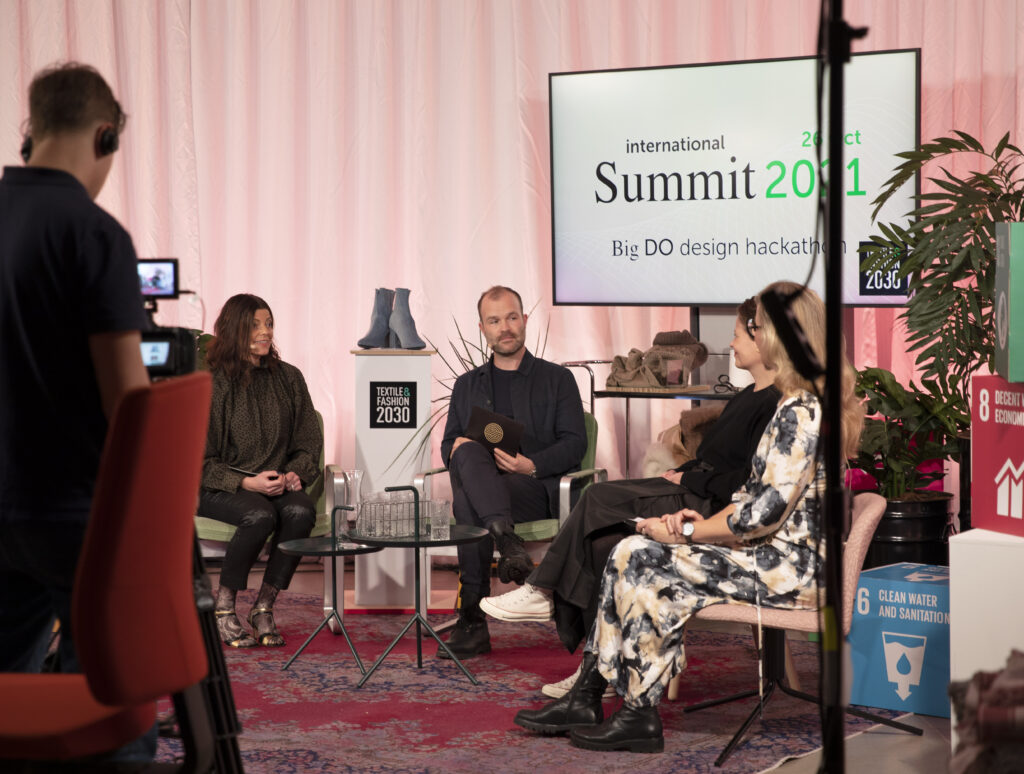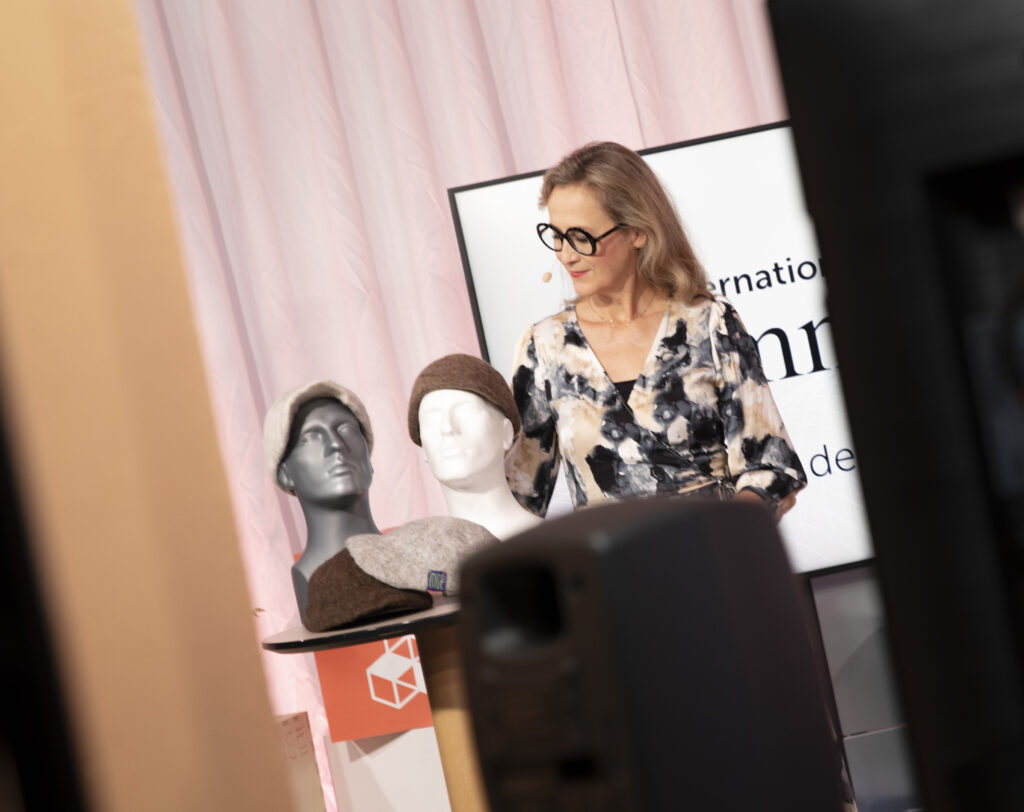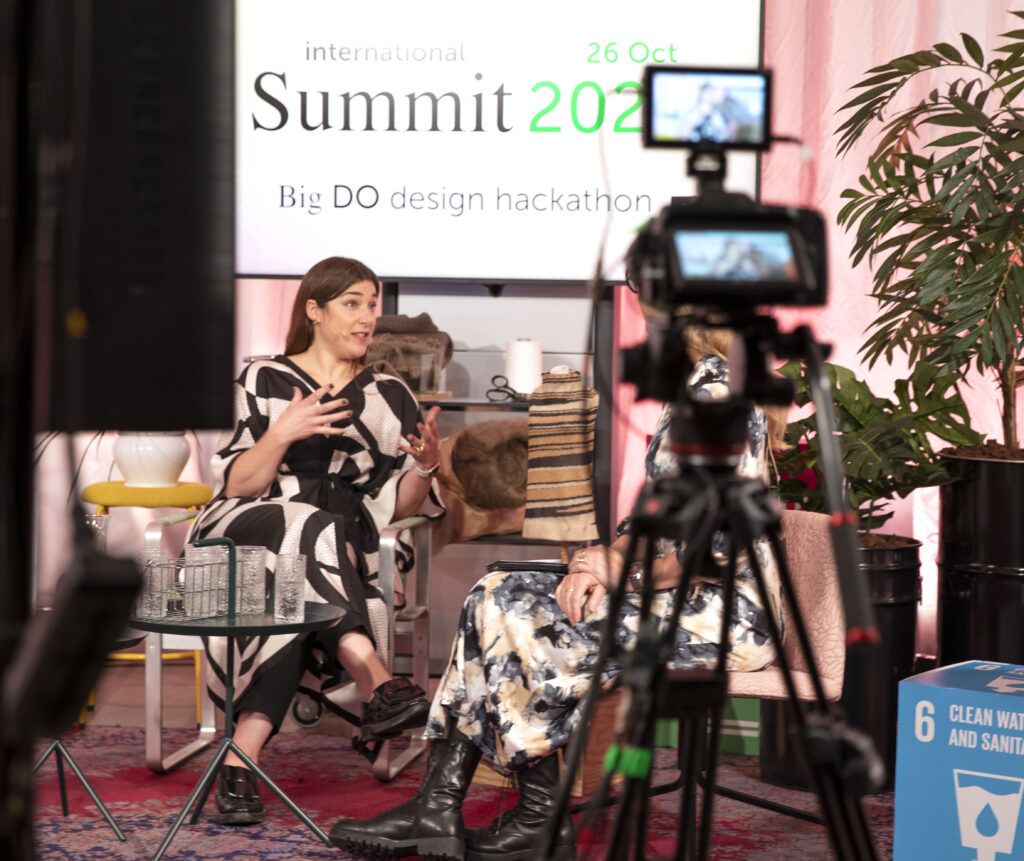Challenges in textile and fashion production, the role of research, the impact of politics, and the results of the Big DO Design Hackathon: these were some of the topics on the agenda when the International Summit 2021 Big DO Design Hackathon took place on 26 October. The conference was viewed by over 300 people worldwide and was organized by the National Platform for Sustainable Fashion and Sustainable Textiles, Textile & Fashion 2030.
Representatives from UNDP, Patagonia, and Fjällräven were among the speakers as well as well-known names such as Håkan Juholt and Alice Bah Kuhnke. Together, they shared their experiences and reflected on the concept of “mindset growth,” or the possibilities of breaking established patterns and ways of thinking by exploring both cultural and new perspectives.
“The purpose of the conference was partly to encourage companies to challenge themselves but also to identify major issues and identify solutions to achieve the climate goals,” said Susanne Nejderås, Platform Leader for Textile & Fashion 2030.

“The conference was arranged as part of the government commission Textile & Fashion 2030 to inspire companies and increase insight among decision-makers about the challenges but also the opportunities in terms of sustainability in the textile and fashion industry. Through the conference, we also wanted to share our culture, which is about having the courage to try new things, and where mistakes are seen as something positive that drive the process forward towards desirable goals,” said Susanne Nejderås.
“The textile and fashion industry is one of the industries that affects the world most negatively. The production process, such as dyeing, accounts for the majority of the climate problems in the textile value chain. The Paris Agreement and meeting its climate goals is a challenge. Time is short, which means we must act now and we must work together,” she continued.
Questions related to the hackathon
Representatives from Textile & Fashion 2030 gathered a number of different companies, designers, and innovators from Sweden, the USA, and South Africa during the first half of 2021 to work on the Big DO Design Hackathon. Together, the participants were given the task of creating their own design concepts based on some of the UN’s global goals; the results would later be shown at the conference.
Among other things, it was the innovation environment DO-tank Center, together with researchers and experts from, among others, the Swedish School of Textiles, that enabled ideas, concepts, and prototypes to be developed.

Jonas Larsson, Senior Lecturer at the Swedish School of Textiles, was involved in the process and supervised most of the participants.
“By bringing people with different cultures together from different parts of the world, this gave a lot of new perspectives on the challenges the textile and fashion industry faces. Together, we created circular concepts that address these challenges and that we hope will inspire people in the industry, politicians, and consumers to act to stay within the plant’s limits,” said Jonas Larsson.
“It was wonderful to experience the commitment to sustainability issues among the participants and to follow their development in the meeting of people, materials, and machines. During the conference, we noticed that the new concepts that came from the Big DO Design Hackathon facilitated the opportunity to take on new challenges and ask new questions,” he continued.
One of the eleven actors who participated in the Big DO, and who presented their results during the conference, was Studio Heijne.
“It has been enriching to be part of the Big DO and to be surrounded by open-minded, creative people who, together, make innovation happen,” said Studio Heijne’s founder, Wendy Heijne.

“Innovations do not arise on their own. They require an open environment where people with different backgrounds and from different cultures can meet and openly exchange ideas. We will continue this collaboration and remember what a unique journey it has been. With continued broadened perspectives and a global and inclusive approach, this is the start of something even bigger that leads us forward towards a better and sustainable world,” concluded Susanne Nejderås.
The recorded conference can be viewed shortly, but the results from the Big DO Design Hackathon are already available to be seen at digitalxpose.se.
More information
- Se all participants and speakers here
- Check out the results from Big DO Design Hackathon in Digital Exposé
- Watch live broadcast afterwards (accessible until November 15th)
Text och photo: Vasilios Bartziokas





